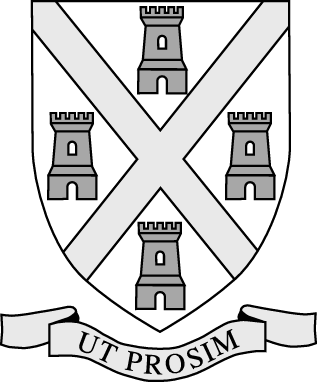Related Research Articles

Matthias was, according to the Acts of the Apostles, chosen by God through the apostles to replace Judas Iscariot following the latter's betrayal of Jesus and his subsequent death. His calling as an apostle is unique, in that his appointment was not made personally by Jesus, who had already ascended into heaven, and it was also made before the descent of the Holy Spirit upon the early Church.

Matthias was Holy Roman Emperor from 1612 to 1619, Archduke of Austria from 1608 to 1619, King of Hungary and Croatia from 1608 to 1618 and King of Bohemia from 1611 to 1617. His personal motto was Concordia lumine maior.

The Bismarck Archipelago is a group of islands off the northeastern coast of New Guinea in the western Pacific Ocean and is part of the Islands Region of Papua New Guinea. Its area is about 50,000 square km.

Matthias Alexander Castrén was a Finnish Swedish ethnologist and philologist who was a pioneer in the study of the Uralic languages. He was an educator, author and linguist at the University of Helsinki. Castrén is best known for his research in the linguistics and ethnography of the Finnic, Ugric and Samoyedic peoples.

The approximately 450 Oceanic languages are a branch of the Austronesian languages. The area occupied by speakers of these languages includes Polynesia, as well as much of Melanesia and Micronesia. Though covering a vast area, Oceanic languages are spoken by only two million people. The largest individual Oceanic languages are Eastern Fijian with over 600,000 speakers, and Samoan with an estimated 400,000 speakers. The Gilbertese (Kiribati), Tongan, Tahitian, Māori and Tolai languages each have over 100,000 speakers. The common ancestor which is reconstructed for this group of languages is called Proto-Oceanic.
The Meso-Melanesian languages are a linkage of Oceanic languages spoken in the large Melanesian islands of New Ireland and the Solomon Islands east of New Guinea. Bali is one of the most conservative languages.
The Mussau-Emira language is spoken on the islands of Mussau and Emirau in the St Matthias Islands in the Bismarck Archipelago.
In linguistics, Melanesian is an obsolete term referring to the Austronesian languages of Melanesia: that is, the Oceanic, Eastern Malayo-Polynesian, or Central–Eastern Malayo-Polynesian languages apart from Polynesian and Micronesian. A typical classification of the Austronesian languages ca. 1970 would divide them into something like the following branches:
Sulka is a language isolate of New Britain, Papua New Guinea. In 1991, there were 2,500 speakers in eastern Pomio District, East New Britain Province. Villages include Guma in East Pomio Rural LLG. With such a low population of speakers, this language is considered to be endangered. Sulka speakers had originally migrated to East New Britain from New Ireland.

The Church of the Assumption of the Buda Castle, more commonly known as the Matthias Church, more rarely the Coronation Church of Buda, is a Catholic church located in the Holy Trinity Square, Budapest, Hungary, in front of the Fisherman's Bastion at the heart of Buda's Castle District. According to church tradition, it was originally built in Romanesque style in 1015, although few references exist. The current building was constructed in the florid late Gothic style in the second half of the 14th century and was extensively restored in the late 19th century. It was the second largest church of medieval Buda and the seventh largest church of the medieval Hungarian Kingdom.

The Central Solomon languages are the four Papuan languages spoken in the state of Solomon Islands.

F.P.1 is a 1932 German film directed by Karl Hartl. The film was based on the 1931 novel of the same name by Kurt Siodmak. The plot concerned a permanent air station in the middle of the Atlantic Ocean. The film was developed as a multilingual version, with one film each in German, French, and English. The film was shot in 1932 and premiered in Berlin late that year with English and French-language versions premiering the next year.
Saint Matthias was an Apostle.

Matthias Schoenaerts is a Belgian actor. He made his film debut at the age of 13 in Daens (1992), which was nominated for the Academy Award for Best Foreign Language Film. He is best known for his roles as Filip in Loft (2008), Jacky Vanmarsenille in the Oscar-nominated Bullhead (2011), Ali in the BAFTA and Golden Globe-nominee Rust and Bone (2012), for which he won the César Award for Most Promising Actor, Eric Deeds in The Drop (2014), Bruno von Falk in Suite Française (2015), Gabriel Oak in Far from the Madding Crowd (2015), Hans Axgil in The Danish Girl (2015) and Uncle Vanya in Red Sparrow (2018). Schoenaerts received critical acclaim for his portrayal of an ex-soldier suffering from PTSD in Disorder (2015), and for his performance as an inmate training a wild horse in The Mustang (2019).
St. Pius X - St. Matthias Academy is a coeducational private, Catholic high school for grades 9–12 located in Downey, California. It is operated by the Roman Catholic Archdiocese of Los Angeles and accredited by the Western Association of Schools and Colleges and the Western Catholic Educational Association

GTK is a free and open-source cross-platform widget toolkit for creating graphical user interfaces (GUIs). It is licensed under the terms of the GNU Lesser General Public License, allowing both free and proprietary software to use it. It is one of the most popular toolkits for the Wayland and X11 windowing systems.
Tenis, or Tench, is the nearly extinct language of Tench Island in the St Matthias Islands of the Bismarck Archipelago.
The Niwer Mil language is spoken by 9,033 people on Boang Island, Malendok Island, Lif Island and Tefa Island in the Tanga Islands, Namatanai District of New Ireland Province in Papua New Guinea. It was split from the Tangga language in 2013. It is one of the languages that form the St George linkage group of Meso-Melanesian languages.

Mount House was a coeducational independent school situated in the outskirts of Tavistock, Devon; there was an associated preparatory school for primary school children. In June 2014, the school formally merged with Kelly College to form Mount Kelly School.
Proto-Admiralty Islands is the reconstructed ancestor of the Admiralty Islands languages of the Admiralty Islands, located in Papua New Guinea. It belongs to the Oceanic branch of the Austronesian languages.